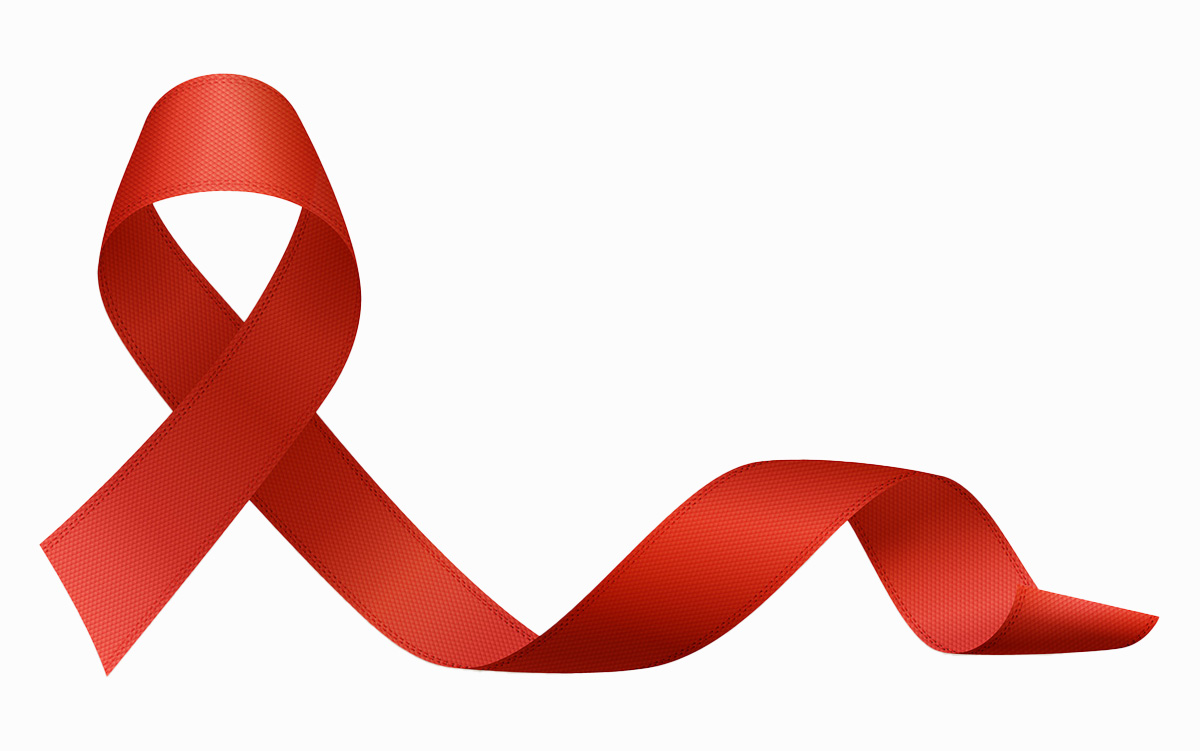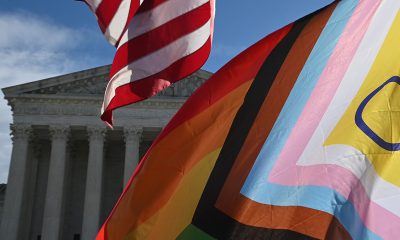Health
Research into AIDS cure advancing but remains in ‘very early days’
HIV treatment and prevention getting ‘better and better’

Editor’s note: This is part two of our interview with Carl Dieffenbach, director of the Division of AIDS at the National Institute of Allergies and Infectious Diseases. Click here to read part one.
Unlike the coronavirus, the AIDS virus’s ability to permanently infect the human body has made it more difficult to develop an AIDS vaccine, and research into a cure for HIV/AIDS is continuing to advance but remains in its “very early days,” according to Carl W. Dieffenbach, who has served for the past 25 years as director of the National Institutes of Health’s Division of AIDS.
But in an interview with the Washington Blade, Dieffenbach, who holds a doctorate degree in biophysics, said the already highly effective antiretroviral drug treatment for HIV is continuing to advance to a point where the current one pill per day regimen may soon be replaced by a single injection that will make HIV undetectable in the body and untransmitable for six months and possibly a full year.
He said the single injection advance would be applicable for both people who are HIV positive as well as for those who are HIV negative and are taking the current one pill per day prevention medication known as PrEP.
“One of the things I am most happy with is the whole U equals U movement – that undetectable equals untransmitable,” Dieffenbach said in referring to the current antiviral medication that makes HIV undetectable in the human body and prevents the virus from being transmitted to another person through sexual relations.
“That really is a rallying cry for people living with HIV that you can become fully suppressed and live knowing that there is no virus in your body as long as you take your pill, and you are free to love,” he told the Blade. “And that’s a wonderful thing.”
Although he didn’t say so directly, Dieffenbach made it clear that he and other government and private industry researchers working on an AIDS vaccine and an HIV/AIDS cure know that people with HIV can live a full and productive life as the push for a vaccine and cure continues.
Dieffenbach said a dramatic difference in the genetic makeup between the coronavirus and the AIDS virus is the reason why an AIDS vaccine has yet to be developed after more than 20 years of vaccine research while a COVID-19 vaccine was developed in a little more than a year.
“Once a person becomes HIV positive, that individual is HIV positive for life,” he said. “There is no going back. There is no spontaneous cure.” By contrast, Dieffenbach points out that with coronavirus, just five percent of those who become infected become seriously ill and are at risk of dying. He said between 35 percent and 40 percent of those infected with coronavirus are asymptomatic and often are unaware that they were infected.
“So, the human immune system by and large does a pretty good job of fighting off the coronavirus,” he said. That, among other factors, has made it possible to develop an effective COVID vaccine sooner than an AIDS vaccine, according to Dieffenbach.
Washington Blade: Where do things stand now in the progress of developing a cure for HIV and AIDS?
Carl Dieffenbach: So, let’s talk a moment about what we are doing in the space of trying to achieve a cure for HIV. Clearly, this is one of the two major research programs or research goals remaining in HIV – an effective and durable vaccine and then a cure that allows people to not take an antiretroviral [drug] and still live the ‘U’ equals ‘U’ [undetectable equals untransmitable] life.
What we want is a cure that really allows people to be free of HIV. And that can be achieved in two ways. You could see the HIV be eliminated or eradicated from the body. You would call that a sterilizing cure. And the other would be more of an immunological or other means of control that would suppress the virus similar to the way the antiretrovirals do, but it’s using the natural immunity, the induced immunity that the human body is capable of generating.
Up until recently there hadn’t been examples of an individual that had achieved that kind of cure. Just recently there was one reported. The big program we have in cure research is called the Martin Delany Collaboratories for Cure Research. And Marty was one of the lead activists in the very early days of HIV through the ‘90s. And he really pushed NIH very, very hard to not forget about a cure and to really focus on the best possible anti-virals.
He was just a strong leader and a really wonderful person who just pushed constantly the way you would hope the activist community would continue to try to drive improvements, even when things were going well. So, we felt it was a great way to honor Marty to name the program after him. This program has been around for a little over a decade and it gets more sophisticated and better every cycle.
And the two methods I mentioned – the ability to eliminate the virus completely and establish an immunologic or some other means of control – are major themes of these programs. It’s still in the very early days. There are limited clinical trials ongoing, but they’re very exploratory. There are maybe hints of things coming in the next couple of years. But it remains in the very early days. In some ways it’s similar to where we are with vaccines where we’ve had a little bit of success but nothing really that we then can say this is the vaccine for the future.
So, these two types of research – a vaccine and cure – remain our top research priorities. And we will continue at this until we have HIV vaccines and the abilities to cure, because we cannot really control and eliminate the epidemic without either of those two strategies.
Blade: Can you talk a little about the human trials that are going on now for a possible HIV cure being conducted by the Rockville-based company American Gene Technologies?
Dieffenbach: That’s right. One approach for achieving a cure are these gene-based strategies. There is a company that has a strategy for a gene-based treatment that they have been working on for a number of years. And that has been moving forward. And the proof will be in the pudding when we have a sufficient number of people in a way that are truly evaluated.
There are also strategies that look at ways of using what amounts to scissors, molecular scissors that can go in and chop out the virus. So, there are a number of strategies that people are using or considering for this idea of elimination of the reservoir, including the gene therapy method that we were just discussing.
Blade: The company conducting the gene therapy trials has said the treatment they hope will lead to a cure requires taking blood from someone, altering the genetic makeup of certain cells, and re-infusing the blood back into their body. Is that something that would be practical for treating a large number of people?
Dieffenbach: So, all of these gene therapy strategies are in the very experimental stage. They have to do something called ex-vivo transduction. That’s fancy words for saying what you just said. You take cells out of the human body, alter them by adding the new therapeutic and incorporate it into the cell, and re-infuse those cells back into the human body. So, first you start with one cell type like fully differentiated lymphocytes and then you move on.
The ultimate goal will be to get it so you can take a shot, where the shot would go in with the gene therapy and basically go into cells and immunize the cells in such a way that they provide protection from HIV infection as well as elimination of existing copies of HIV. So, we’re many steps away from that.
Blade: Some people may be asking why a COVID vaccine has been developed in just over a year since the worldwide COVID outbreak, but an HIV vaccine has not yet been developed after 20 or more years of research. Is there something different with the coronavirus as opposed to the HIV virus that might explain why we haven’t had an HIV vaccine at this time?
Dieffenbach: I think this is a really important point. And I want to talk about two different activities. One is the differences between the viruses themselves. With coronavirus, five percent of people who become infected with coronavirus actually get sick and get into a hospital and have near death experiences. Thirty-five to 40 percent of people who get infected with coronavirus are actually never aware that they were infected.
So, the human immune system by and large does a pretty good job of fighting off the coronavirus. But it is incredibly infectious. It is spread by aerosol. With HIV, it is transmitted sexually. It’s transmitted through blood and other bodily fluids. Once a person becomes HIV positive, that individual is HIV positive for life. There is no going back. There’s no spontaneous cure. We’ve had 70 million people around the world acquire HIV. By last count, there may be one person in all the years that may have spontaneously cleared their HIV infection. That took 12 years of that person’s life.
It is a rarity. So, from that perspective the type of immunity that you need to induce by a vaccine is so fundamentally different for coronavirus and for HIV. So, that’s the first step.
The second thing is why were we so successful with the coronavirus vaccine? It wasn’t dumb luck. Going back to the earliest SARS outbreak and through MERS and through other respiratory viruses the research team here at NIH has been looking at ways of building the better mouse trap, building a better immunogen. Take a part of the virus and make it the best it could be in terms of presenting or showing itself to the human immune system so that you get an incredibly robust quality response. And that was the work that was done at the VRC, the [NIH] Vaccine Research Center.
So, when that group first published their work on what we call this stabilized spike we offered that technology to all the vaccine manufacturers. And Moderna, Pfizer, and J&J all chose to use this modified version. AstraZeneca and Oxford chose different paths. The Chinese and the Russians chose a different path. And I think the quality of the vaccine and the effectiveness of the vaccine shows in part because of the genetic engineering that we have done to make it the best immunogenetic it can be.
So, it was a two-fold thing. We built a better vaccine to tackle a disease that really natural immunity can work well on. That’s one of the reasons why our vaccines – the Moderna, the Pfizer, and the J&J are still quite active against all these variants. It’s because their immune response was so robust. So, it was probably six to ten years of work that led us to that exact moment when SARS-CV2 came along that we know what to do with this. We were able to design a vaccine based on all that previous work within a very short period of time and start clinical trials within 60 days of identifying the coronavirus sequence. It wasn’t magic. It was hard work.
That’s a great story. There are so many unsung heroes in this. And it’s a great thing to be part of that we – NIH – could make it so it wasn’t just a proprietary thing for us. But we were able to give the world a way of making the best vaccine possible and to allow the companies to pick it up and run with it. So, again, at the end of the day the vaccines that I think we’ll come back to rely upon were made with this construct that was developed here through years of research.
Blade: Is there anything I did not ask you that is relevant to the HIV research?
Dieffenbach: Well, just to close the loop, so now that we learned all those lessons from the coronavirus vaccine, we’re going back to HIV vaccines and applying some of the rules and technologies and things that we’ve learned. Now we’re going back and looking at that more carefully and trying different things. And thinking about how we can build a better HIV vaccine based on what we know for a coronavirus vaccine.
So, we’re trying to complete the cycle. We started with HIV. We developed the platforms, applied it to coronavirus. And now we’re trying to close the loop.
Blade: You’ve been saying that these clinical trials for an AIDS vaccine have been going on for a while. Do you recall when the first AIDS vaccine trial started?
Dieffenbach: The very first trial for an AIDS vaccine was done in the ‘90s. And it didn’t work. It was a single protein. It induced antibodies. But the antibody did not react with the intact viruses. So, it failed. And that was the AIDS vax experience.
Blade: Do you remember when in the ‘90s that was?
Dieffenbach: The papers were finally published in 2003. So, the studies started in the late 90s and were completed in the early 2000s.
Blade: So, it appears that happened around the time the effective anti-retroviral drugs became available?
Dieffenbach: The highly active anti-retroviral therapy first made its debut in 1995. And that was a combination of AZT, 3TC, and either Crixivan, the protease inhibitor, or a different protease inhibitor from either La Roche or Abbott. And those drugs were quite effective in preventing the virus and helping people. But they all had tremendous side-effects as you will remember. And we then got better and better and better therapies where we are now at one pill once a day.
That is my background in this. I came from the drug side working with the companies back in the early ‘90s to bring those along. And I grew up in this field and then graduated to director of AIDS and then continued on to therapy and cure and vaccines ever since. I’ve been director since 2007.
Health
Developing countries to receive breakthrough HIV prevention drug at low cost
Announcement coincided with UN General Assembly

Philanthropic organizations on Wednesday announced two agreements with Indian pharmaceutical companies that will allow a breakthrough HIV prevention drug to become available in developing countries for $40 a year per patient.
The New York Times notes Unitaid, the Clinton Health Access Initiative, and Wits RHI reached an agreement with Dr. Reddy’s Laboratories to distribute lenacapavir. The Gates Foundation and Hetero brokered a separate deal.
Unitaid, the Clinton Health Access Initiative, Wits RHI, and the Gates Foundation announced their respective agreements against the backdrop of the U.N. General Assembly.
Lenacapavir users inject the drug twice a year.
UNAIDS in a press release notes lenacapavir in the U.S. currently costs $28,000 a year per person.
“This is a watershed moment,” said UNAIDS Executive Director Winnie Byanyima in a statement. “A price of USD 40 per person per year is a leap forward that will help to unlock the revolutionary potential of long-acting HIV medicines.”
The State Department earlier this month announced PEPFAR will distribute lenacapavir in countries with high HIV prevalence rates. A press release notes Gilead Sciences, which manufactures the drug, is “offering this product to PEPFAR and the Global Fund at cost and without profit.”
Health
Don’t just observe this Suicide Prevention Month
Crucial mental health are being defunded across the country

September is Suicide Prevention Month, a time to address often-ignored painful truths and readdress what proactivity looks like. For those of us who have lost someone they love to suicide, prevention is not just another campaign. It is a constant pang that stays.
To lose someone you love to suicide is to have the color in your life dimmed. It is beyond language. Nothing one can type, nothing one can say to a therapist, no words can ever convey this new brand of hurting we never imagined before. It is an open cut so deep that it never truly, fully heals.
Nothing in this world is comparable to witnessing someone you love making the decision to end their life because they would rather not be than to be here. Whether “here” means here in this time, here in this place, or here in a life that has come to feel utterly devoid of other options, of hope, or of help, the decision to leave often comes from a place of staggering pain and a resounding need to be heard. The sense of having no autonomy, of being trapped inside pressure so immense it compresses the will to live, is no rarity. It is a very real struggle that so many adolescents and young adults carry the weight of every day.
Many folks in our country claim to uphold the sanctity of human life. But if that claim holds any validity or moral grounding, it would have to start with protecting the lives of our youth. Not only preventing their deaths but affirming and improving the quality of their lives. We need to recognize and respond to the reality that for too many adolescents and teenagers, especially those who are marginalized and chronically underserved, life does not feel so sacred. It feels damn near impossible.
Today, suicide is the second leading cause of death for Americans ages 10 to 24. That rate has almost doubled since 2007. Among queer-identifying youth, the statistics are crushing. Nearly 42 percent have seriously considered suicide in the past year, and almost 1 in 4 have attempted it. These are not just numbers. These are the children and teens we claim to care for and protect. These are kids full of potential and possibility who come to believe that their lives are too painful or meaningless to go on.
For our youth who identify as both queer and BIPOC, the numbers soar to even more devastating heights. Discrimination, housing insecurity, trauma (complex, generational, or otherwise), and isolation pile on the already stacked mental health risks. Transitional times like puberty, continuing education, coming out, or even being outed can all become crisis points. And yet, the resources available to support these youth remain far too limited, particularly in rural and underfunded communities.
We must also call out a disheartening truth. Suicide is not just a mental health issue but also a political one. Despite years of advocacy and an undeniable increase in youth mental health crises, funding for prevention is barely pocket change in regard to national budgets. In 2023, the federal government spent an underwhelming $617 million on suicide prevention efforts. To provide some perspective, that’s less than what we spend each year defending the border wall.
Meanwhile, school-based mental health services, one of the most effective means of reaching children and teens early, are being decimated. A $1 billion mental health grant program, which began after the Uvalde school shooting aiming to increase school counseling services, was recently pulled from hundreds of school districts. In some places, that left over 1,000 students for every one mental health provider. And in others, it left entire counties with zero youth therapists.
This rollback is not an isolated agenda. It operates in tandem with a cultural and legislative attack on the LGBTQ community and our access to affirming education, healthcare, and visibility. Programs that create safe spaces and lifelines are being wiped away. The LGBTQ line of the 988 suicide hotline, created to offer identity-affirming, culturally competent crisis support, was recently defunded, despite having provided help to over 1.3 million callers. The political message here is unmistakable. Only some lives, some pain, and some needs of a select group are worth the money and care.
I can’t help but contrast this with how our country controls the process of childbirth. Over the last decade, particularly following growing awareness and resulting concern around maternal mortality rates, the U.S. has consistently increased investment in maternal health. Federal funds now support initiatives like Healthy Start, safety improvements in birthing facilities, and dedicated maternal mental health hotlines. In 2022, the Into the Light Act was passed, allocating $170 million over six years for screening and treatment of postpartum mental health conditions. These are great and necessary efforts. But even here, we fall short. A study published in “JAMA Psychiatry” in November 2023 examined drug overdose deaths among pregnant and postpartum women in the U.S. from 2018 to 2021. The findings revealed that suicide and overdose were the leading causes of death during this period.
Yet even this limited progress for new parents shows us an undeniable contradiction. As a nation, we have shown we are capable of legislating support for life when we are politically and morally motivated to. We can pass bills, allocate funds, and create crisis hotlines. What’s missing is the motivation to extend that same urgency to the mental health and well-being of young people before they become statistics.
At the same time, astonishing amounts of public money have been directed toward restricting reproductive freedom. Since the overturning of Roe v. Wade in 2022, states have collectively spent hundreds of millions of dollars enforcing abortion bans, funding legal battles, surveillance infrastructure, and crisis pregnancy centers that often provide misleading information.
In 2023 alone, Texas allocated over $140 million to the Alternatives to Abortion program, while at the same time slashing funding to health providers that offered comprehensive reproductive care. Nationwide, anti-abortion lobbying and litigation have received sustained state and federal backing, often at the expense of preventive care, contraception access, and the very maternal health supports that claim to be prioritized. Only the willful can ignore the blatant contradiction here. While suicide and overdose silently claim the lives of mothers post-childbirth, far more political and financial energy is funneled into controlling whether people can become mothers in the first place.
Real prevention should not be limited to easy words and good intentions each September. Real prevention should be about intrenching mental health support into the daily lives of young folks. It means funding school counselors and social workers so that every child has someone to talk to. It means restoring services that center the needs of queer, Indigenous, and BIPOC youth, who are far too frequently left behind. It means guaranteeing that crisis lines are open. It means creating and nurturing environments where vulnerability is not discouraged but invited.
We also have to stop criminalizing mental health crises. Way too often, suicidal and struggling youth are met with handcuffs or hospitalization that adds layers to trauma rather than with compassion. Prevention must be proactive, not punitive. We need peer support groups, trauma-informed teachers, and trusted adults who are trained to notice the signs before the worst happens.
We are also overdue for a culture shift. A society with the alleged aim to value life does not shame those who are struggling to hold onto it. Contrary to popular unsaid belief, strength is not stoicism. Strength is connection. It’s knowing when to ask for help.
If we as a country actually and honestly cherish life, we have to prove it. We have to prove it not with words but with resources, policy, and compassion. Suicide prevention cannot begin and end with simple slogans and annual awareness. It has to mean a continuous investment in systems of care that affirm life, especially for those who are most vulnerable.
This September, as we recognize Suicide Prevention Month, I dare us to do more than to just memorialize those lost. Let’s start fighting for those living. Let’s create a world where no child, teen, or young adult feels that their only way out is to stop living. They are not expendable. They are not alone. And their lives are sacred. If only we had the heart to act like it.
I am almost ashamed to say that it wasn’t until I lost someone I love to suicide that I began volunteering my time to the American Foundation for Suicide Prevention. The work that the AFSP does is not only needed, it’s imperative today more than ever. If nothing else, please hit this link and donate.
Health
GLP-1s can help address LGBTQ healthcare barriers: experts
Queer people more subject to body dissatisfaction

Dana Piccoli tried everything to lose weight.
She frequented the gym, went on and off diets and hired a personal trainer. When Piccoli decided to get on a GLP-1, it wasn’t a “short cut” to drop weight – it was a way for her to live her life comfortably.
“When I told someone I was on it, they were like, ‘I’m going to the gym because I want to do it the right way,’” said Piccoli, managing director of queer media collaborative News is Out. “Obviously that kind of stung because for me, this is the right way.”
GLP-1 drugs have caused quite a stir since becoming more integrated into mainstream medicine. The newness of some brands, like Ozempic, have led to stigmas and mistrust surrounding them. These stigmas disproportionately affect the LGBTQ+ community since queer people are more subject to body dissatisfaction and have more trouble finding accessible healthcare.
Through all the noise, however, experts say taking GLP-1s are safe with the right counseling, and LGBTQ+ people could largely benefit from them.
So, what’s all the ruckus about? Are GLP-1s an “easy way out” to lose weight? And how do they really impact the LGBTQ+ community?
How GLP-1s work
GLP-1s, or glucagon-like peptide-1, mimic the actions of a GLP-1 that is released by the gut after eating. It can help people with Type-2 diabetes by lowering blood sugar through the release of insulin, and can help those with obesity by slowing down digestion and, in turn, reducing one’s appetite.
Like any medication, there are some side effects to consider. Sangeeta Kashyap, assistant chief of clinical affairs at Weill Cornell Medicine, said symptoms like nausea, diarrhea, and vomiting can occur. However, Kashyap said these side effects are less severe than past GLP-1 brands – a reason that contributes to their newfound popularity – and can be better managed with proper guidance.
Since the drug causes a loss of both fat and muscle loss, she said doctors should inform patients to do strength training to maintain any deteriorating muscle, and to eat high-protein diets, since fatty foods increase the risk of vomiting or nausea.
Getting on a GLP-1 isn’t just about shedding a few pounds. Kashyap said it’s a commitment to your health and body, which is why talking with a doctor and understanding the risks are crucial.
“We give patients appropriate guidelines,” Kashyap said. “We do blood tests, we monitor things, and give a lot of counseling to these patients. I don’t think you could just give the medicine out like candy.”
Piccoli, who started her GLP-1 journey with her wife, said the medication helped turn off “food noise.”
“Your motivation for things, your reward system with food is kind of disabled,” Piccoli said. “That really helped me understand my relationship with food.”
Turning down food noise
Losing weight isn’t as easy as getting on a GLP-1 and eating less. Piccoli said turning off the food noise in her brain led to a complete lifestyle shift.
“I had to completely change everything about the way I eat, everything about the way I approach food,” she said about her experience taking Mounjaro. “This has been one of the hardest things I’ve ever done.”
Kashyap said the lifestyle change that comes with taking a GLP-1 is why it’s important to consult a doctor first to understand how it could affect you not just physically, but also emotionally.
Kashyap said she sees higher rates of mental health disorders in transgender women, a community that already faces more barriers in finding accessible healthcare.
This could lead to someone getting on the drug for the wrong reasons, Kashyap said. She noted that those with eating disorders or body dysmorphia could face more severe side effects. Body dysmorphia and body image concerns are already an issue for the LGBTQ+ community, Kashyap said, so prescribing GLP-1s needs to be handled with care.
One way to ethically prescribe a GLP-1 to a patient would be to conduct a mental health screening, according to Kashyap. Mental health screenings aren’t required to get on a GLP-1, but Kashyap said they would be beneficial to patients who may be prone to negative effects by taking the drug.
Although some people may see more severe side effects, Caroline Apovian, co-director of the Center for Weight Management and Wellness at Brigham and Women’s Hospital, said GLP-1s are a completely safe and rigorously tested drug.
If a person faces negative side effects from taking a GLP-1, it’s more about how their body or brain is reacting to it than the drug itself being unsafe.
“Any kind of weight loss is going to affect your mood, either positively or negatively,” Apovian said.
With the queer community already facing increased barriers to healthcare, there’s another issue to consider: GLP-1s aren’t cheap.
Depending on where you get it from and whether or not insurance covers it, you could pay hundreds or even thousands of dollars for a limited supply.
Piccoli said she paid out of pocket and had to make sacrifices for her and her wife to both get on a GLP-1.
“I didn’t renew my car lease,” Piccoli said. “We decided to go down to one car so that we had some extra income monthly to be able to pay for it.”
On the other hand, Matt, who requested to be identified only by his first name due to the sensitivity of the topic, said he was shocked at how easy it was to get the cost of his GLP-1 covered by insurance. He had been warned by his doctor about the difficulty of getting it covered, and expected an “uphill battle.”
“[My doctor] wrote out the prescription for me, and on my way home, I got a text message from the drugstore saying it was ready to go,” said Matt, who’s lost 48 pounds on Ozempic since June 2024.
Matt said experiences like his, although not the standard, are why it’s important to talk with your doctor about getting on a GLP-1 and see for yourself rather than taking advice from social media stigmas.
Kashyap said the drug is also becoming more accessible through websites like Lilly, which provide vials for about $300-500. While that isn’t pocket change, it’s significantly cheaper than retail pharmacies.
You may have to make sacrifices like Piccoli did, but getting access to modern GLP-1s for weight loss isn’t only for the Hollywood elites like it seemed to be a few years ago.
Through all the social stigmas and uncertainty, Kashyap and Apovian agreed that GLP-1s are a major benefit for the queer community.
Trans women have increased rates of obesity, Type-2 diabetes and metabolic syndrome, according to Kashyap. Estrogen treatments increase fat mass and insulin resistance, leading to higher obesity rates in trans women. Kashyap said GLP-1s could be helpful in mitigating those effects.
GLP-1s also reduce alcohol cravings, so Kashyap noted that anyone struggling with alcoholism may see improvements with that condition upon getting on the drug.
Getting on a GLP-1 isn’t the walk in the park some may make you believe it is – it’s a lifestyle change and health commitment.
But it’s also a change that can provide good and healthy results if you seek the appropriate guidance from a professional.
While social stigmas in the queer community may lead to misinformation on who should use it and what it should be used for, GLP-1s are safe and can be a much-needed relief for a community facing significant healthcare obstacles.
-

 U.S. Supreme Court2 days ago
U.S. Supreme Court2 days agoSupreme Court rejects Kim Davis’s effort to overturn landmark marriage ruling
-

 U.S. Supreme Court5 days ago
U.S. Supreme Court5 days agoLGBTQ legal leaders to Supreme Court: ‘honor your precedent, protect our families’
-

 Pennsylvania5 days ago
Pennsylvania5 days agoErica Deuso elected as Pa.’s first openly transgender mayor
-

 District of Columbia2 days ago
District of Columbia2 days agoCapital Pride files anti-stalking complaint against local LGBTQ activist




















